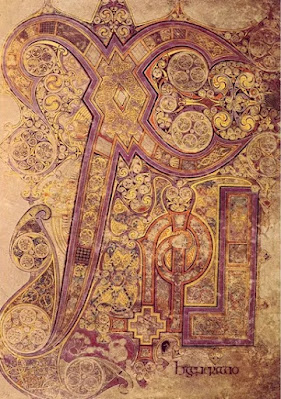It was visited by St. Columba (according to Adomnán), who while there prophesied about a future where there would be debates over the dating of Easter.
By the 9th century the place was thriving and had grown to several buildings and between one and two thousand men. Wooden structures had been replaced with stone. Ciarán had died in 549, and his body buried under the original church that was later rebuilt in stone as the Temple Ciarán (see illustration). It is the smallest church on the site at only 9x12 feet.
Excavations of Temple Ciarán have revealed no body, but did uncover a crozier. The detailed and beautiful Clonmacnoise Crozier is on display at the National Museum of Ireland. Although some like to associate it with Ciarán, the workmanship dates it to the late 11th century. It is an example of the superb craftsmanship that came out of Clonmacnoise, as its location and reputation created a thriving secular community as well as a religious one.
Plague was always an issue in the Middle Ages. Ciarán died from the plague, and a plague in the late 7th century killed many of the students and teachers. In the 12th century, Clonmacnoise began to decline. Raids reaching far inland from Vikings (one of the authors of the Clonmacnoise Book of the Dun Cow was killed in 1106 by Vikings) and Normans (who had taken over England in 1066) contributed, but so did simple economic factors. Not far to the north the town of Athlone was growing and drawing talent and commerce. There were also competing religious sites as other orders started to move into Ireland to spread their own versions of monasticism.
One Clonmacnoise survival is the Annals of Clonmacnoise, chronicling Ireland from prehistory to 1408. I'll tell you a little about it next time.











